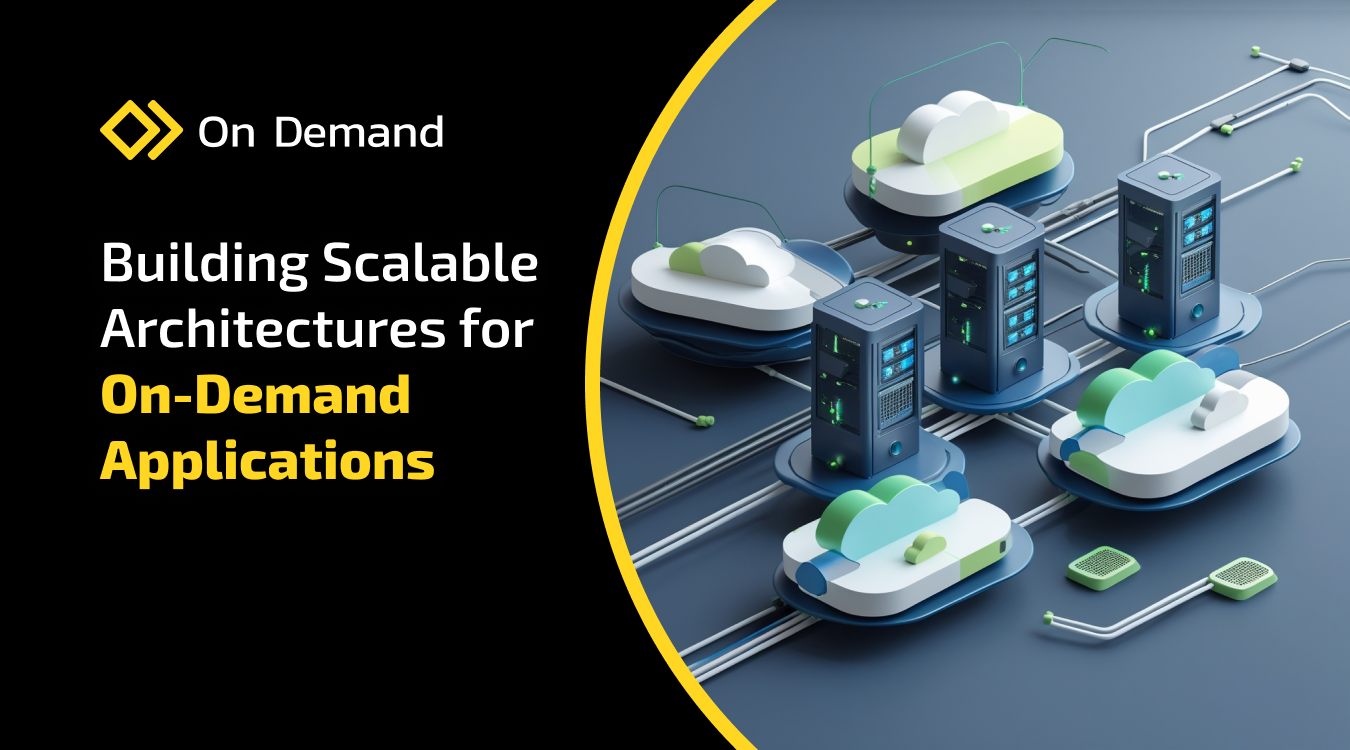Posted At: Jan 17, 2025 - 1,407 Views
10 minutes to read

On-demand applications like e-commerce apps and grocery delivery solutions have taken the world by storm in today’s fast-moving digital world. These apps have a reliance on scalable architectures to seamlessly handle fluctuating user demands to various adaptive scales. This blog aims to cover necessary strategies, technological foundations, and costs associated with developing on-demand apps, and how relevant industry changes affect the same process.
Why Scalability is Crucial for On-Demand Applications
Without scaling to handle peak traffic with minimal impact on the user experience, any on-demand application is destined to fail. Imagine a poorly designed system that crashes during a high-demand event like sales or holidays resulting in a dissatisfied user and considerable lost revenue in the process.
Key benefits of scalable architectures include:
- Uninterrupted user experience during and after traffic spikes.
- Allocating resources dynamically to maintain cost-effectiveness.
- Ensuring future proofing of applications for growth & change.
Core Components of Scalable Architectures for On-Demand Applications
1. Cloud-Based Solutions: The Backbone of Scalability
Scalable systems are built on top of cloud architecture which means that on-demand apps never require big investments in infrastructure architecture. Tools like AWS, Microsoft Azure, and Google Cloud offer:
- Elastic computing power to manage traffic surges.
- Automatically changes server usage based on the requirements.
- Secured and scalable data handling with reliable storage.
2. Microservices Architecture for Modular Growth
A microservices architecture divides an application into smaller pieces without needing to completely redesign the entire application. Fault tolerance and flexibility are increased while each service can be developed, deployed, and scaled independently.
Example: To scale its streaming platform, Netflix uses microservices that help millions of people watch uninterrupted.
3. Real-Time Scalability Solutions
Real-time tools such as load balancers and content delivery networks (CDNs) optimize performance by:
- Delivering user requests equally to the servers.
- Caching frequently accessed data for faster retrieval.
These tools facilitate applications to respond to user actions on demand, improving satisfaction.
Read More:- Top 10 Benefits of On-Demand Apps for Small Businesses
Development Costs for On-Demand Applications
The cost of developing on-demand applications depends on various factors, including features, technology stack, and team expertise. Here’s an estimated breakdown:
Development Stage | Estimated Cost Range | Details |
Concept and Design | $5,000 - $10,000 | Wireframes, UI/UX design, prototyping. |
Backend and Architecture | $10,000 - $30,000 | Cloud setup, microservices, database. |
Frontend Development | $8,000 - $20,000 | Web/app interface, real-time updates. |
Integrations and APIs | $5,000 - $15,000 | Payment gateways, maps, third-party APIs. |
Testing and QA | $3,000 - $8,000 | Performance, security, and scalability tests. |
Maintenance and Updates | $2,000 - $5,000 per month | Bug fixes, and feature enhancements. |
Emerging Trends Shaping Scalable On-Demand Applications
5G Technology
Rolling out 5G networks will see faster, more reliable internet and enable on-demand applications will be able to process larger datasets in real-time. To take full advantage of the increased connectivity, this enhanced connectivity dictates that scalable architectures must adapt to do so.
User Engagement with Gamification
Rewards or leaderboards can really help to integrate gamified elements and therefore retain the users. To harness these interactions in scalable ways that feel good, these features should also be aligned to scalable designs to gracefully scale with increased interactions.
Best Practices for Building Scalable On-Demand Applications
- Optimize Database Performance: Implement database sharding and caching for faster data retrieval.
- Plan for Redundancy: Use failover systems and backups to maintain reliability during failures.
- Leverage DevOps Practices: In practice, deployment and scaling processes become more automated in order to maintain consistent application performance.
- Monitor Continuously: Employ analytics tools to identify bottlenecks and optimize resource allocation.
Conclusion: Building Next-Gen Scalable Solutions
Creating architecturally scalable applications that can scale on demand is far more than just a necessity, it’s an essential competitive differentiator. Thanks to the advent of such head turn, including cloud-based solutions, microservices architecture, and real-time scaling solutions, businesses can fashion high-performance apps geared towards undergoing dynamic user demands.
These principles should be connected to emerging technologies like 5G and gamification so you future-proof your application and stay ahead in the market. Whatever your goals — whether it’s developing your on-demand application from scratch, or improving the one that you already have — a good investment in top-scaled is key to recurring in the dynamic digital economy.
Build your own scalable on-demand solution today!
( Consult Us )
Frequently Asked Questions (FAQs)
1. What is a scalable architecture in on-demand applications?
Scalable architecture refers to designing systems that can handle growth in user demand without performance issues. For on-demand applications, scalability ensures smooth functioning during traffic surges.
In practical terms:
- Handles increased traffic: dynamically without crashes.
- Reduces costs: by optimizing resource usage.
- Future-proofs apps: for business growth.
2. How does cloud architecture enhance scalability?
Cloud architecture provides the flexibility and infrastructure to scale applications effectively. It removes the need for large upfront investments in physical servers.
Key benefits include:
- Elastic computing power: to handle traffic spikes.
- Automated resource management: for efficiency.
- Reliable storage and data security: with top-tier providers like AWS or Azure.
3. What are the advantages of using microservices architecture?
Microservices divide an application into smaller, independently scalable components, improving flexibility and fault tolerance.
Advantages:
- Independent scaling: of individual services.
- Faster updates: with minimal downtime.
- Resilient systems: that limit the impact of individual failures.
4. Why is real-time scalability crucial for user experience?
Real-time scalability ensures that on-demand applications can handle user actions instantly, maintaining a seamless experience.
This involves:
- Load balancing: to distribute traffic effectively.
- CDNs: to cache and deliver data faster.
- Optimized responses: during traffic surges.
5. What are the key cost factors in building an on-demand application?
The cost of developing an on-demand app depends on features, architecture, and team expertise.
Typical breakdown:
- UI/UX design : $5,000 - $10,000.
- Backend architecture : $10,000 - $30,000.
- Frontend development : $8,000 - $20,000.
- API integrations : $5,000 - $15,000.





